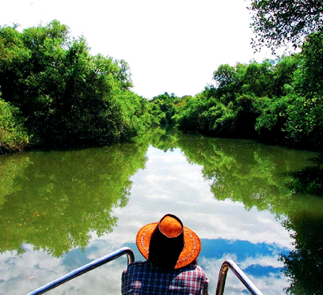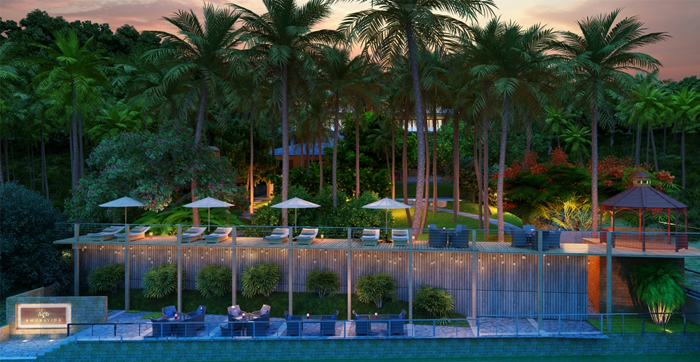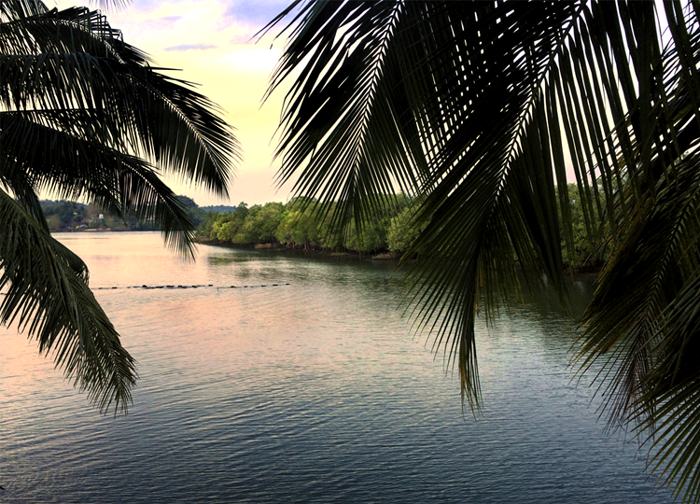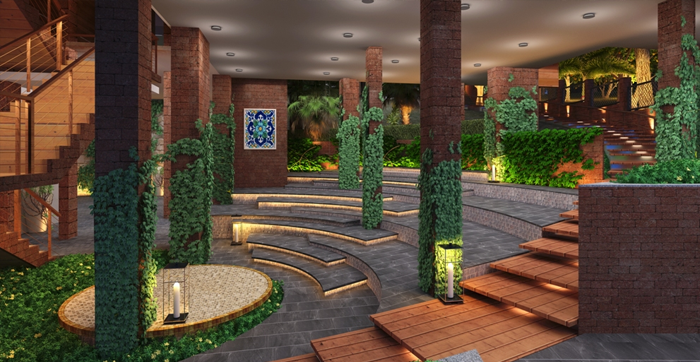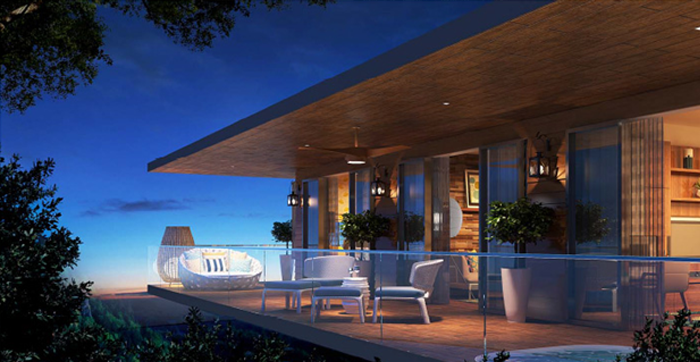by Meher Castelino
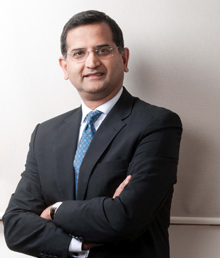 When Uttam Dave decided to start a residential project for the first time, he probably was inspired by his childhood dream and everyone’s pet fantasy of living in a Tree House. He is the brain behind the upcoming Amoravida Goa project, designing 15 eco-friendly tree house bungalows on the banks of the Chapora river. We at the Luxury Chronicle got talking with Mr. Uttam Davé, MD, FRICS, Atmanya Projects LLP, to understand more about the development.
When Uttam Dave decided to start a residential project for the first time, he probably was inspired by his childhood dream and everyone’s pet fantasy of living in a Tree House. He is the brain behind the upcoming Amoravida Goa project, designing 15 eco-friendly tree house bungalows on the banks of the Chapora river. We at the Luxury Chronicle got talking with Mr. Uttam Davé, MD, FRICS, Atmanya Projects LLP, to understand more about the development.
This is the second project but the first residential one. The first is a boutique resort in the Himalayas in the Kumaon Region in Uttarakhand, which has only 14 suites but it is very niche up-scale. That’s a larger project from the investment prospective.
It’s not exactly a heritage site in that sense. The history of the site goes back about 110 years and it is recorded in Portuguese what are called inscriptions and descriptions on Goa, so in the archives it’s mentioned and there is a legend that it was a place where people used to meet and there is a connection with the Moravi Temple where the brave used to meet on that site. So we have been very sensitive, not just to the community but mostly to the ecology so we have planned the project completely on sustainable guidelines considering the land and we have done a whole variety of things.
Why did you choose Goa?
If you look at India where you have the quality of life possibly without pollution, good connectivity, high degree of literacy, then there are very few places other than Goa. Goa is emerging as a hub for creative people and that was my target for a creative community, very similar to what Aurovile was during the 60’s and 70’s in a different genre.
Himalaica is quite successful and highly rated by TripAdvisor and other forums. The resort project near Nainital called Atmanya Kumaon is still to start. It is under construction and will be ready by middle of 2017. The one in Goa will be ready end of 2017.
Please describe the different profiles of Atmanya Himalaica, Atmanya Bardhow, Atmanya Kumaon and Atmanya Corbett Conservancy projects.
Himalaica is a very boutique 6-room homestay and it’s run in a very residential manner. It’s a 15-year-old home again done in a heritage style. It was our home originally conceived as a retirement home, which we turned into a homestay 3 years ago. The Atmanya Kumaon project is a resort and actually a living museum on the Kumaon region. We are getting professional curating done for the museum. We have around 1500-2000 pieces of memorabilia, so every room and public room will be themed either after a destination or personality, so there will be a Jim Corbett room or an Almora room. It’s very niche all about the heritage of Kumaon in terms of its architecture/landscape.
Atmanya Badhow is a very interesting project. It’s in a village about 2 hours from Nainital and a couple of kilometres from Corbett Park. It is a 150-year-old heritage home in a village. It was quite strange the way I came upon it. I was looking for old beautifully carved window frames in Kumaon and someone informed there was an old home and they were willing to sell the frames. When I went to see the house, I thought it was crazy why anyone would pull down the entire house only to pull down the window frames. I ended up buying the house and the idea to restore it and gave a true village homestay experience. It’s a resort but not operative yet one can call this family right behind the place go for a picnic and they will cook local meals, it’s an experiential place.
Atmanya Corbett Conservancy is a very ambitious project. It’s part of what is called the Corbett National Park and what I am trying to do there is create a small private conservancy, there are very few in India just 2-3. This one is unique in the sense that there is wild life there. We are taking degraded farmland, which has been infested with invasive species removing them and then reforesting the land either naturally or artificially. Once the invasive species are removed and reforested then the wild life comes back along with birds, butterflies etc. It’s a conservation project that is ongoing. There will be some tourist accommodation there but all the surpluses will go back into conservation or into rural life. It’s 6 acres now but will grow to 60 acres. We have already done the first area of clearing and reforestation.
In Goa there are a set of guidelines, which are well documented now. There are certain principals that you use. Net-zero means zero energy consumption, which is not always achievable. What we have managed to do is reduce it by 26 per cent. It is done in a variety of ways – by using natural breezes instead of artificial cooling. Solar energy is used to reduce energy consumption, and designs the buildings in ways that they capture natural lighting. These are some of the examples for Net Zero. For sustainability guidelines, say one can’t build on the ground so one doesn’t cover the ground as the land needs to recharge, the under growth and native species have to be there. So we have built on stilts 10-20 ft. above the ground so that native species aren’t under the building. Finally the cluster of buildings minimizes the footprint on the land. We cover barely 17-25 per cent land that too on stilts. We haven’t cut any trees or hill cutting. We have transplanted 13 fully grown trees with the help of experts. Recycled waste water and also organic waste along with greenhouse gases are reduced by 20 per cent. There is LED lighting. We wanted wind turbines but there was not enough wind velocity to generate electricity.
Isn’t Goa already saturated with projects and reports a low occupancy rate?
Goa is not saturated. There is a lot of building happening that is why we chose to go the sustainable route to bring that distinction partly because of belief and partly because we believe that is the way of the future. People will seek out sustainable living, so we hope to make a distinction with whatever is there in Goa.
In Goa there are two clusters of projects. There are the mass of projects that are Rs 50 -110 lakhs apartments or row houses. Then you have the ultra-luxury homes for Rs 7 -12 crores upwards but there are not many of those. There is a niche in the middle at Rs 3.5 crores for 3-bedroom 3500 sq. ft. apartments and that’s the segment we are trying to tap so today the middle or upper middle class can afford.
That won’t be possible as it is a residential complex.
We hope to set a new paradigm for residential construction all about sustainability, no lip service but actually practice it. We are spending 40 percent more as against a conventional project, at the same time we are not looking at short term gains. We are pricing it 10 per cent below the market average. It’s a value product and we are looking at people who are eco-conscious, want that lifestyle and are sensitive. The project will have all fixed furniture, wardrobes, bathroom/kitchen cabinets and white goods but no loose furniture.
Sotheby’s of London has taken up the marketing for the project so that gives us a great global platform. We are working with a series of channel partners across India located in Mumbai, Bengaluru, Delhi and Goa who are real estate agents. We are active on social media, and we will use electronic/print.
Yes it is. We started this project in October 2016.
The structure is up and it’s a unique concept of 15 tree house bungalows, sky walk, closely clustered but with privacy. There is still no advance booking.
Are you having any visits arranged for the prospective buyers?
Yes there will be visits for buyers.
The advantage of Goa – there was an appreciation in property value even in a slow period by 5-6 per cent. People believe that in Goa because of tourist demand they can let out property and get some returns. There is no other destination in India that allows this.
Hospitality went through a challenging time since 26/11/2008, which was combined with global economic slowdown. There was a lot of supply that came into the market in India so it has taken several years for the industry to recover. Luckily demand in India is growing at 13 per cent. The average occupancy is crossing 60 per cent in the hotel business but the rates still haven’t firmed up. Till the rates firm up as an industry it will not be profitable for 1-2 years.
Real estate means commercial or residential. The former is doing well in the last 3-4 quarters in the metros. But residential has been slow for the last 3 years. We have hit the bottom and now we have started rising. They say residential follows commercial so the belief is it will turn and if India is progressing at 7.5 per cent GDP growth then residential will firm up but the key is that jobs have to be created, which is not happening.
Don’t look at the initial capital value but the ongoing maintenance cost and how the investment is protected, well maintained value and will continue to appreciate. Everybody thought in India realty won’t depreciate but has by 50 percent so changes in transport infrastructure and how well these impact the site is important. We have chosen the site and thought ahead because of the new airport at Mopa in 2019.
Check the reputation of the builder and his ongoing commitment to the project. Quality of structural material is important.
Definitely a budget price sensitive buyer who looks for affordable housing. Most buyers are first time home buyers.

